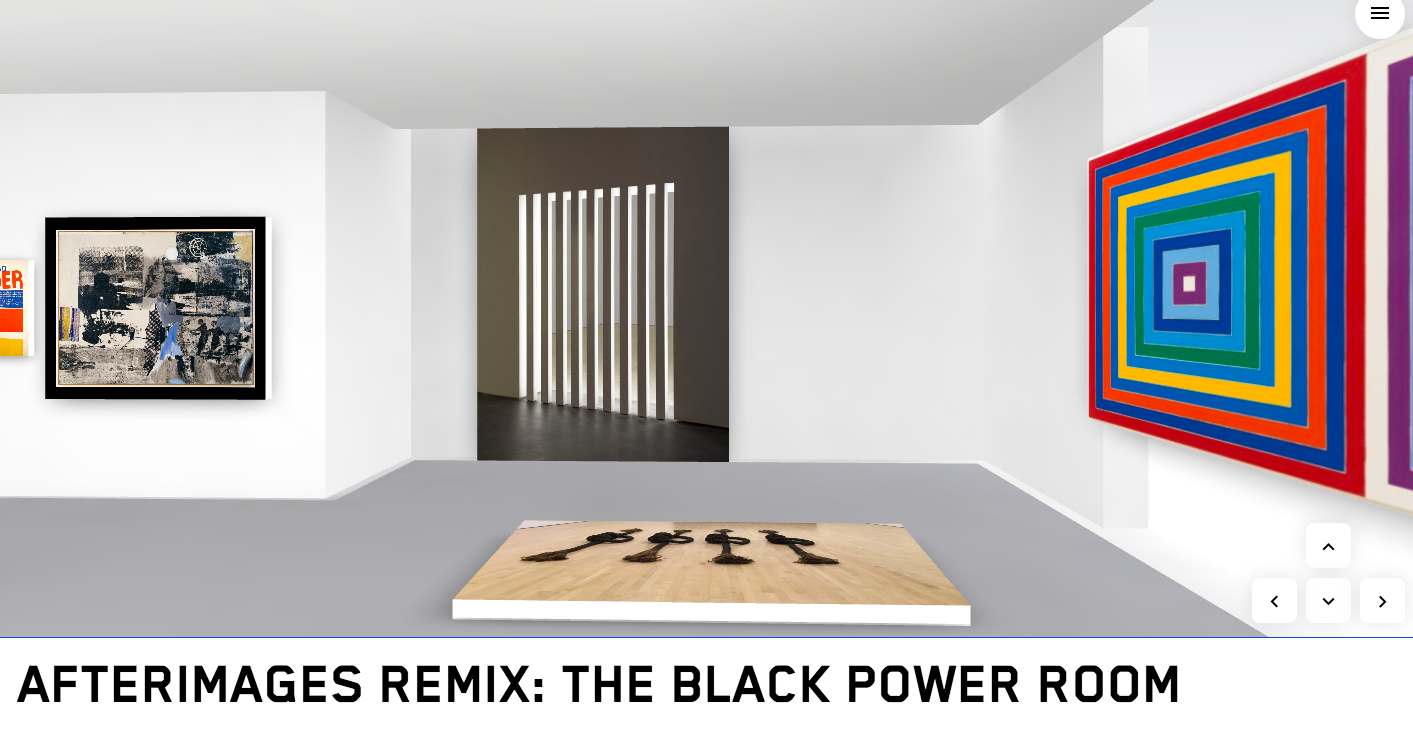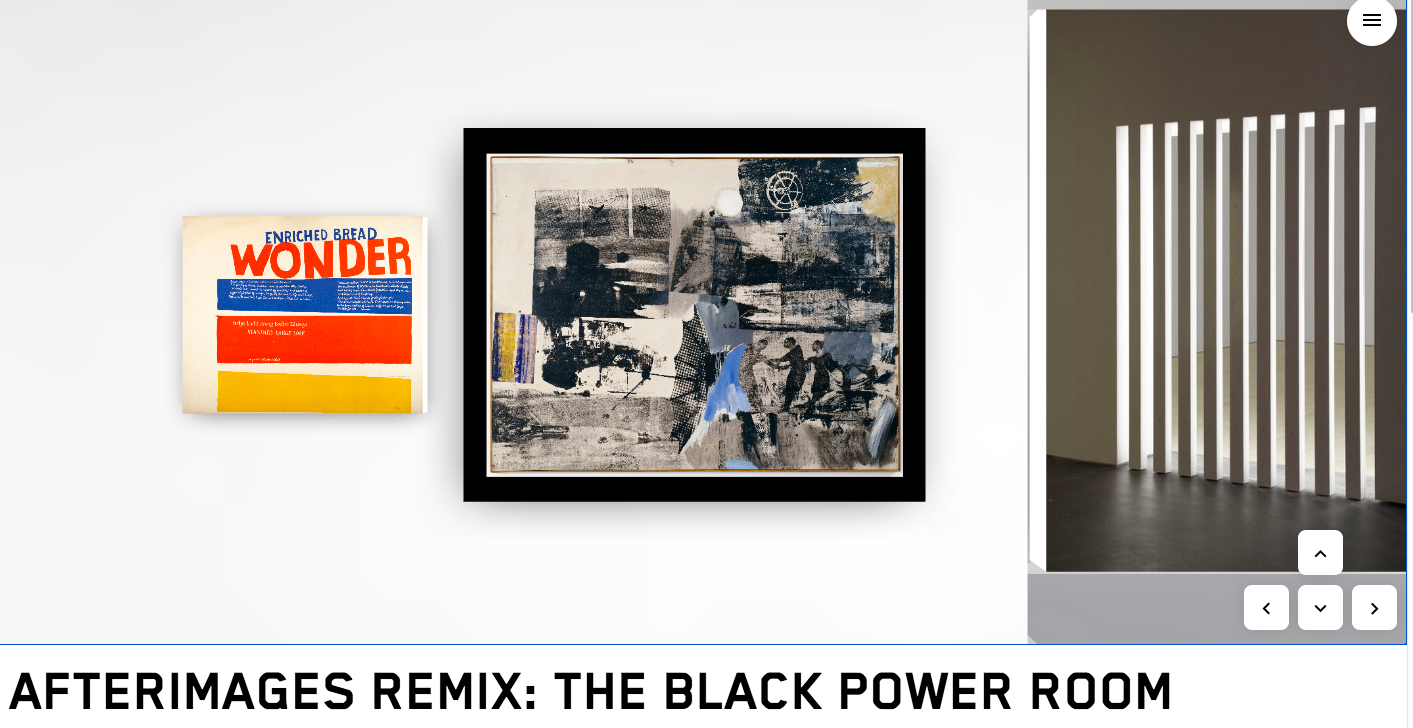Afterimages Remix:
Black Power Room
The call for Black Power, whose echo reverberates from the 1960s to the present, arose amidst significant racial oppression, characterized by state-sanctioned police violence, cycles of mass wealth extraction within decaying slums, ghettoes, and urban hubs, as well as de facto segregation that specifically impacted Blacks in terms of education, housing, and economic opportunity. Despite the will and intent of the system to subjugate and oppress marginalized people all over the world, Black Power galvanized a collective of artist activists who championed Black dignity as a human right while progressing their artistic achievements.
Following the Watts Rebellion in Los Angeles, August 1965, provoked by the untenable conditions of caste-based inequality, artist Noah Purifoy challenged the extractive economic system that targeted marginalized communities through a practice of assemblage, a tradition that carries through with contemporary artists such as Betye Saar, Alison Saar, and Frank Bowling’s acrylic and mixed media on collaged canvas works. Evoking minimalist art sensibilities, Theaster Gates reimagines the fire hose, a symbol of the brutality and violence within the era's racial segregation politics, in his work "Civil Tapestry 3" (2010), transforming it into a representation of safety. In a similar vein, Maren Hassinger's piece "Untitled Rope" (1972) utilizes the form to dismantle the painful historical legacy of lynching that is intertwined with the nautical rope.
In its selective arrangement of artworks, notably those by Black artists within the exhibition “Afterimages: Echoes of the 1960s from the Fisher and SFMOMA Collections,” there is a notable omission of the decade's Black Power movement, effectively erasing it from the museum’s narrative of the “cultural current” and “consciousness-shifting artistic movements of the 1960s that are relevant today.” While the exhibition takes the liberty of spatial organization to delve into the realm of the Minimalist Art movement, spanning across multiple rooms, the decision to isolate each piece by Black artists prevents the exhibition from fully embracing the comprehensive spectrum of the movement's intricate politics, divisions, and the burgeoning sensibilities of Black Art that emerged during that era.
In his 1969 essay, "Any Day Now: Black Art and Black Liberation," cultural critic and playwright, Larry Neal, encourages that Black Art find its place within "meaningful institutions that are run and controlled by Black people with a vision," institutions that value and comprehend the culture while avoiding marginalization, misrepresentation, and tokenism. "Afterimages Remixed: Black Power Room," an exhibition encompassing artworks from the SFMOMA and Fisher Collections as well as pieces by contemporary artists in the diaspora, effectively presents Black Art as a distinct movement, not solely confined to aesthetics, but inseparable from its politics. This showcases how the intertwining of these two aspects challenges the simplistic categorization of Black Art as Minimalist or any form of Modern Art, unless the definition of Modern Art is unambiguously expanded to encompass the unique experiences of Black artists within the movement.
New collection.
Step into the vibrant world of the Black Power Room Print Shop, where history, art, and empowerment converge. Explore the curated collection of digital prints that pay homage to the rich legacy of the Black Power movement. Each print is a visual embodiment of resilience, unity, and social change – inspired by iconic figures, pivotal moments, and the indomitable spirit that defined an era. From bold designs that echo the call for justice to intricate pieces that celebrate cultural heritage, the collection invites you to own a piece of history while supporting the mission of the exhibition. Immerse yourself in the stories and symbols that shaped a movement, and carry them with you as a source of inspiration and empowerment. Every purchase from the Black Power Room Print Shop contributes to preserving the legacy of the movement and amplifying its continued impact. Step in, explore, and take a piece of the power home with you today.




